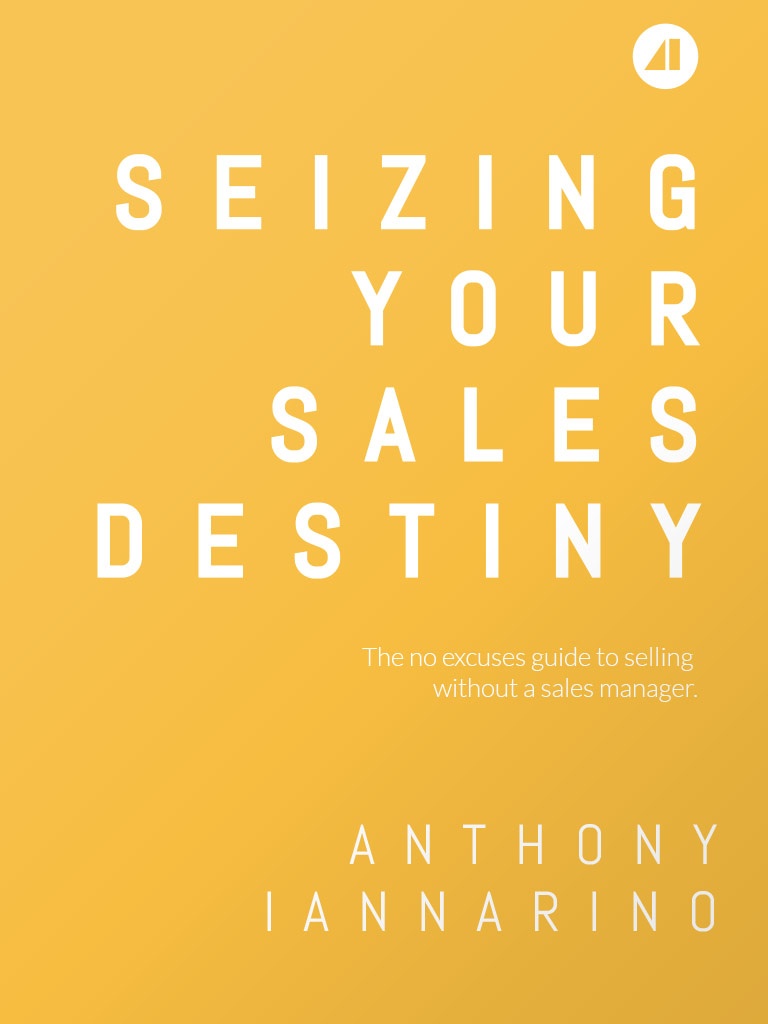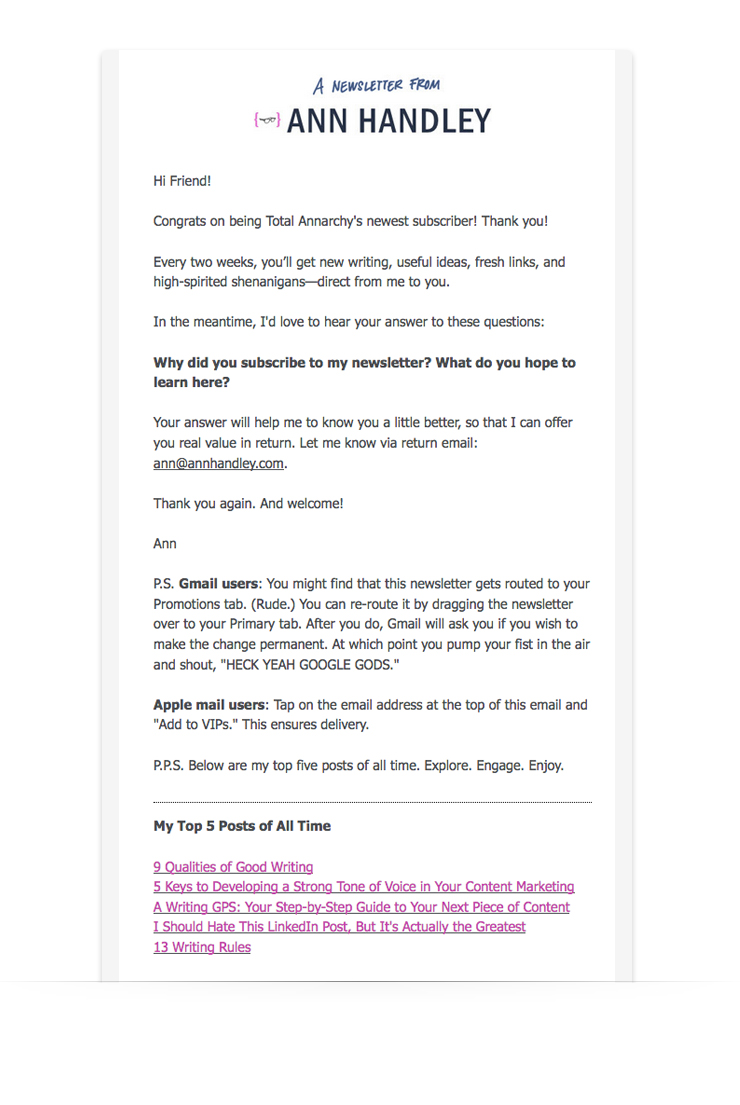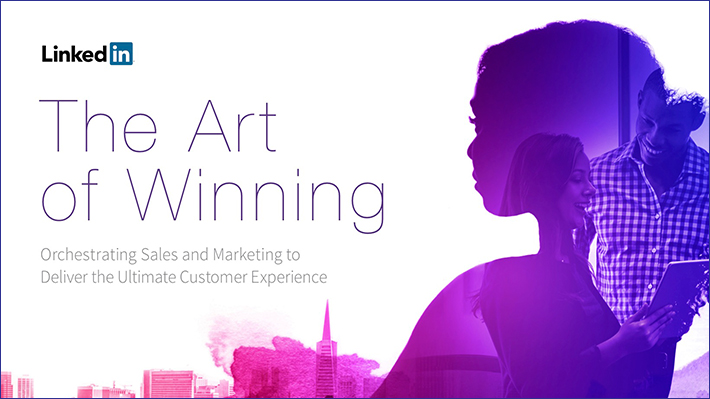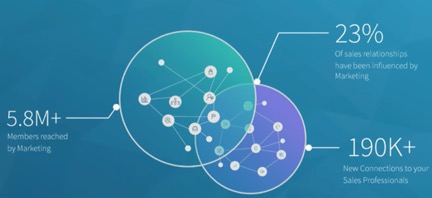After the usual summer lull in publishing, September brings about a flood of new books to dive into. These are just some of the books we'll be getting between the covers of in September. It was really hard limiting this list to 25 books, and we'll most likely be talking about some others that aren't on this list over the coming month, so stay tuned.
 Leading Matters: Lessons from My Journey by John L. Hennessy, Stanford Business Books
Leading Matters: Lessons from My Journey by John L. Hennessy, Stanford Business Books
Scholar, engineer, philanthropist, leader. In this new book, former Stanford President John Hennessy draws on his experience as an educator and technology entrepreneur to offer thoughtful and visionary guidance on leadership and service.
In Leading Matters, current Chairman of Alphabet (Google's parent company), former President of Stanford University, and "Godfather of Silicon Valley," John L. Hennessy shares the core elements of leadership that helped him become a successful tech entrepreneur, esteemed academic, and venerated administrator.
Hennessy's approach to leadership is laser-focused on the journey rather than the destination. Each chapter in Leading Matters looks at valuable elements that have shaped Hennessy's career in practice and philosophy. He discusses the pivotal role that humility, authenticity and trust, service, empathy, courage, collaboration, innovation, intellectual curiosity, storytelling, and legacy have all played in his prolific, interdisciplinary career.
Hennessy takes these elements and applies them to instructive stories, such as his encounters with other Silicon Valley leaders including Jim Clark, founder of Netscape; Condoleezza Rice, former U.S. Secretary of State and Stanford provost; John Arrillaga, one of the most successful Silicon Valley commercial real estate developers; and Phil Knight, founder of Nike and philanthropist with whom Hennessy cofounded Knight-Hennessy Scholars at Stanford University.
Across government, education, commerce, and non-profits, the need for effective leadership could not be more pressing. This book is essential reading for those tasked with leading any complex enterprise in the academic, not-for-profit, or for-profit sector.
 21 Lessons for the 21st Century by Yuval Noah Harari, Spiegel & Grau
21 Lessons for the 21st Century by Yuval Noah Harari, Spiegel & Grau
In Sapiens, he explored our past; in Homo Deus he looked to our future. Now, one of the most innovative thinkers on the planet turns to the present to make sense of today’s most pressing issues.
How do computers and robots change the meaning of being human? How do we deal with the epidemic of fake news? Are nations and religions still relevant? What should we teach our children? 21 Lessons for the 21st Century is a probing and visionary investigation into today’s most urgent issues as we move into the unchartered territory of the future. As technology advances faster than our understanding of it, as hacking becomes a tactic of war, and as the world feels more polarized than ever, Yuval Noah Harari addresses the challenge of navigating life in the face of constant and disorienting change and raises the important questions we need to ask ourselves in order to survive.
In twenty-one accessible chapters that are both provocative and profound, Harari builds on the ideas explored in his previous books, untangling political, technological, social, and existential issues and offering advice on how to prepare for a very different future from the world we live in. How can we retain freedom of choice when Big Data is watching us? What will the future workforce look like and how should we ready ourselves for it? How should we deal with the threat of terrorism? Why is liberal democracy in crisis?
Harari’s unique ability to make sense of where we have come from and where we are going has captured the imaginations of millions of readers around the world. Here he invites readers to consider values, meaning, and personal engagement in a world full of noise and uncertainty. In such a world deluged with irrelevant information, clarity is power. The ability of 21 Lessons for the 21st Century to present complex contemporary challenges clearly and accessibly makes it essential reading.
 Farsighted: How We Make the Decisions That Matter the Most by Steven Johnson, Riverhead Books
Farsighted: How We Make the Decisions That Matter the Most by Steven Johnson, Riverhead Books
The hardest choices are also the most consequential. So why do we know so little about how to get them right?
Big, life-altering decisions matter so much more than the decisions we make every day, and they’re also the most difficult: where to live, whom to marry, what to believe, whether to start a company, how to end a war. There’s no one-size-fits-all approach for addressing these kinds of conundrums.
Steven Johnson’s classic Where Good Ideas Come From inspired creative people all over the world with new ways of thinking about innovation. In Farsighted, he uncovers powerful tools for honing the important skill of complex decision-making. While you can’t model a once-in-a-lifetime choice, you can model the deliberative tactics of expert decision-makers. These experts aren’t just the master strategists running major companies or negotiating high-level diplomacy. They’re the novelists who draw out the complexity of their characters’ inner lives, the city officials who secure long-term water supplies, and the scientists who reckon with future challenges most of us haven’t even imagined. The smartest decision-makers don’t go with their guts. Their success relies on having a future-oriented approach and the ability to consider all their options in a creative, productive way.
Through compelling stories that reveal surprising insights, Johnson explains how we can most effectively approach the choices that can chart the course of a life, an organization, or a civilization. Farsighted will help you imagine your possible futures and appreciate the subtle intelligence of the choices that shaped our broader social history.
 The Person You Mean to Be: How Good People Fight Bias by Dolly Chugh, Harper Business
The Person You Mean to Be: How Good People Fight Bias by Dolly Chugh, Harper Business
An inspiring guide from award-winning social psychologist at the New York University Stern School of Business on how to confront difficult issues including sexism, racism, inequality, and injustice so that you can make the world (and yourself) better
Many of us believe in equality, diversity, and inclusion. But how do we stand up for those values in our turbulent world? The Person You Mean to Be is the smart, “semi-bold” person’s guide to fighting for what you believe in.
Social psychologist Dolly Chugh reveals the surprising causes of inequality, grounded in the “psychology of good people”. Using her research findings in unconscious bias as well as work across psychology, sociology, economics, political science, and other disciplines, she offers practical tools to respectfully and effectively talk politics with family, to be a better colleague to people who don’t look like you, and to avoid being a well-intentioned barrier to equality. Being the person we mean to be starts with a look at ourselves.
Dolly argues that the only way to be on the right side of history is to be a good-ish—rather than good—person. Good-ish people are always growing. Second, she helps you find your “ordinary privilege”—the part of your everyday identity you take for granted, such as race for a white person, sexual orientation for a straight person, gender for a man, or education for a college graduate. This part of your identity may bring blind spots, but it is your best tool for influencing change. Third, Dolly introduces the psychological reasons that make it hard for us to see the bias in and around us. She leads you from willful ignorance to willful awareness. Finally, she guides you on how, when, and whom, to engage (and not engage) in your workplaces, homes, and communities. Her science-based approach is a method any of us can put to use in all parts of our life.
Whether you are a long-time activist or new to the fight, you can start from where you are. Through the compelling stories Dolly shares and the surprising science she reports, Dolly guides each of us closer to being the person we mean to be.
 You Are a Mogul: How to Do the Impossible, Do It Yourself, and Do It Now by Tiffany Pham, Simon & Schuster
You Are a Mogul: How to Do the Impossible, Do It Yourself, and Do It Now by Tiffany Pham, Simon & Schuster
As the founder of Mogul—praised by Sheryl Sandberg as the #1 millennial platform—Tiffany Pham created a global technology and media empire by the age of 27. As living proof that the old rules of success no longer apply, Tiffany writes the new rules for following your passions and forging your own path in an age of disruption.
Traditionally, the word “mogul” has been attributed to men. But Tiffany Pham has redefined it—now, when you Google the word, the top search result is the company she founded: Mogul. The platform enables millions of women, across 196 countries, to connect, share information, and access knowledge.
So how did a young woman—who arrived in the United States without speaking a word of English—turn a dream of connecting women into a fulfilling career and highly profitable company that has changed so many lives?
Tiffany chronicles her path to becoming one of the most successful entrepreneurs of her generation, and offers specific, actionable advice that covers everything from overcoming self-doubt, to pursuing side-hustles, to crushing it at life and work by over-delivering, all while remaining your authentic self. You will learn how to negotiate job promotions, secure and balance multiple career roles, hire and manage teams, and become a mogul yourself. The book also features strategies and insights from ten of the most powerful moguls worldwide, including Nina Garcia, Star Jones, and Rebecca Minkoff.
You Are a Mogul addresses the new reality that few of us will work for one company for our entire career and that there is no one straightforward formula for a “good life”—personally or professionally. To succeed, we have to be agile, flexible, and strategic. You Are a Mogul is an indispensable road map to the kind of life and career that is demanding and challenging—but also exciting and full of opportunities, if you know where to look.
 Smart Business: What Alibaba's Success Reveals about the Future of Strategy by Ming Zeng, Harvard Business Review Press
Smart Business: What Alibaba's Success Reveals about the Future of Strategy by Ming Zeng, Harvard Business Review Press
How Strategy Works in an Interconnected, Automated World.
Leaders already know that the classic approach to strategy—analyze, plan, execute—is losing relevance. But they don't yet know what replaces it. As everyone and everything becomes more interconnected and digitized, how do you operate, compete, and win?
Ming Zeng, the former Chief of Staff and strategy adviser to Alibaba Group's founder Jack Ma, explains how the latest technological developments, such as artificial intelligence, machine learning, the mobile internet, and cloud computing are redefining how value is created. Written especially for those outside the technology industry or the startup arena, this book introduces a simple, overarching framework to guide strategy formulation and execution in this data-rich and highly interactive environment.
Revealing the revolutionary practices that he and his team have developed at Alibaba, Zeng shows how to:
- Automate decisions through machine learning
- Create products informed by real-time data from customers
- Determine the right strategic positioning to maximize value from platforms and suppliers
- Repurpose your organization to further human insight and enable creativity
- Lead your company's transformation into a smart business
With insights into the strategies and tools used by leaders at Alibaba and other companies such as Ruhan and Red Collar, in a variety of industries from furniture making to banking to custom tailoring, Smart Business outlines a radically new approach to strategy that can be applied everywhere.
 Under Contract: The Invisible Workers of America's Global War by Noah Coburn, Stanford University Press
Under Contract: The Invisible Workers of America's Global War by Noah Coburn, Stanford University Press
War is one of the most lucrative job markets for an increasingly global workforce.
Most of the work on American bases, everything from manning guard towers to cleaning the latrines to more technical engineering and accounting jobs, has been outsourced to private firms that then contract out individual jobs, often to the lowest bidder. An "American" base in Afghanistan or Iraq will be staffed with workers from places like Sri Lanka, Bangladesh, the Philippines, Turkey, Bosnia, and Nepal: so-called "third-country nationals." Tens of thousands of these workers are now fixtures on American bases. Yet, in the plethora of records kept by the U.S. government, they are unseen and uncounted—their stories untold.
Noah Coburn traces this unseen workforce across seven countries, following the workers' often zigzagging journey to war. He confronts the varied conditions third-country nationals encounter, ranging from near slavery to more mundane forms of exploitation. Visiting a British Imperial training camp in Nepal, U.S. bases in Afghanistan, a café in Tbilisi, offices in Ankara, and human traffickers in Delhi, Coburn seeks out a better understanding of the people who make up this unseen workforce, sharing powerful stories of hope and struggle.
Part memoir, part travelogue, and part retelling of the war in Afghanistan through the eyes of workers, Under Contract unspools a complex global web of how modern wars are fought and supported, narrating war stories unlike any other. Coburn's experience forces readers to reckon with the moral questions of a hidden global war-force and the costs being shouldered by foreign nationals in our name.
 Creative Selection: Inside Apple's Design Process During the Golden Age of Steve Jobs by Ken Kocienda, St. Martin's Press
Creative Selection: Inside Apple's Design Process During the Golden Age of Steve Jobs by Ken Kocienda, St. Martin's Press
An insider's account of Apple's creative process during the golden years of Steve Jobs.
Hundreds of millions of people use Apple products every day; a few thousand work on Apple's campus in California; but only a handful sit at the drawing board. Creative Selection recounts the life of one of the few behind the scenes, a highly-respected software engineer who worked in the final years of the Steve Jobs era.
Ken Kocienda offers an inside look at Apple’s creative process. For fifteen years, he was on the ground floor of the company as a specialist, responsible for experimenting with novel user interface concepts and writing software for products including the iPhone, the iPad, and the Safari web browser. His stories explain the symbiotic relationship between software and product development, and reveal what it was like to work on the cutting edge of technology at one of the world's most admired companies.
Kocienda shares moments of struggle and success, crisis and collaboration, illuminating each with lessons learned over his Apple career. He introduces the essential elements of innovation—inspiration, collaboration, craft, diligence, decisiveness, taste, and empathy—and uses these as a lens through which to understand productive work culture.
An insider's tale of creativity and innovation at Apple, Creative Selection shows readers how a small group of people developed an evolutionary design model, and how they used this methodology to make groundbreaking and intuitive software which countless millions use every day.
 Unleash Different: Achieving Business Success Through Disability by Rich Donovan, ECW Press
Unleash Different: Achieving Business Success Through Disability by Rich Donovan, ECW Press
If you discovered a new market comprising 53% of the world’s population, would you act to invest in it?
When it comes to serving the disability market, Unleash Different urges companies to replace "nice to do" with "return on investment."
There are 1.3 billion people around the world who identify as having a disability. When you include friends and family, the disability market touches 53% of all consumers. It is the world’s largest emerging market.
Unleash Different illustrates how companies like Google, PepsiCo, and Nordstrom are attracting people with disabilities as customers and as employees. Replacing “nice to do” with “return on investment” allows market forces to take over and the world’s leading brands to do what they do best: serve a market segment—in this case, the disability market.
Business managers will come to understand:
- how taking a charity-oriented approach to people with disabilities has failed,
- what action is required to capitalize on the world’s biggest emerging market, and
- how their organizations can grow revenue and cut costs by attracting people with disabilities as customers and talent.
Rich gives the reader a peek into how he rose from a Canadian school for “crippled children” to manage $6 billion for one of Wall Street’s leading firms. He makes it easy to relate to the business goal of serving disability—because he has actually done it.
 The Value of Everything: Making and Taking in the Global Economy by Mariana Mazzucato, PublicAffairs
The Value of Everything: Making and Taking in the Global Economy by Mariana Mazzucato, PublicAffairs
In this prescient book, a renowned economist exposes how modern capitalist economies are increasingly rewarding businesses for the amount of wealth they capture for themselves rather than the value they add to the economy—and why we need to instead build a capitalism that works for us all.
Modern economies reward activities that extract value rather than create it. This must change to ensure a capitalism that works for us all.
A scathing indictment of our current global financial system, The Value of Everything rigorously scrutinizes the way in which economic value has been accounted and reveals how economic theory has failed to clearly delineate the difference between value creation and value extraction. Mariana Mazzucato argues that the increasingly blurry distinction between the two categories has allowed certain actors in the economy to portray themselves as value creators, while in reality they are just moving around existing value or, even worse, destroying it.
The book uses case studies—from Silicon Valley to the financial sector to big pharma—to show how the foggy notions of value create confusion between rents and profits, reward extractors and creators, and distort the measurements of growth and GDP. In the process, innovation suffers and inequality rises.
The lesson here is urgent and sobering: to rescue our economy from the next inevitable crisis and to foster long-term economic growth, we will need to rethink capitalism, rethink the role of public policy and the importance of the public sector, and redefine how we measure value in our society.
 Everything for Everyone: The Radical Tradition That Is Shaping the Next Economy by Nathan Schneider, Nation Books
Everything for Everyone: The Radical Tradition That Is Shaping the Next Economy by Nathan Schneider, Nation Books
The origins of the next radical economy is rooted in a tradition that has empowered people for centuries and is now making a comeback.
A new feudalism is on the rise. While monopolistic corporations feed their spoils to the rich, more and more of us are expected to live gig to gig. But, as Nathan Schneider shows, an alternative to the robber-baron economy is hiding in plain sight; we just need to know where to look.
Cooperatives are jointly owned, democratically controlled enterprises that advance the economic, social, and cultural interests of their members. They often emerge during moments of crisis not unlike our own, putting people in charge of the workplaces, credit unions, grocery stores, healthcare, and utilities they depend on.
Everything for Everyone chronicles this revolution—from taxi cooperatives keeping Uber at bay, to an outspoken mayor transforming his city in the Deep South, to a fugitive building a fairer version of Bitcoin, to the rural electric co-op members who are propelling an aging system into the future. As these pioneers show, co-ops are helping us rediscover our capacity for creative, powerful, and fair democracy.
 The Execution Factor: The One Skill that Drives Success by Kim Perell, McGraw-Hill
The Execution Factor: The One Skill that Drives Success by Kim Perell, McGraw-Hill
From a real-life rags-to-riches phenomenon—the proven program for putting ideas into action for ultimate success in business and in life.
At the age of 23, Kim Perell was broke. By 30, she was a multimillionaire. Kim is the first person to say that this can be anyone’s story. Yet she succeeded while others who had enormous talent struggled to get their ideas off the ground It’s not about being a business genius. It’s about mastering one simple skill—execution—and this book teaches readers how to build this skill quickly and effectively.
The Execution Factor reveals the five traits needed to become an execution expert. It shows readers how to identify areas of personal strength, develop clarity on what they’re truly passionate about, create a roadmap for achieving goals, and implement it all for greater success in their business life. The book includes a proprietary “execution success” test enabling readers to determine their execution strength.
 Dear Founder: Letters of Advice for Anyone Who Leads, Manages, or Wants to Start a Business by Maynard Webb, with Carlye Adler, St. Martin's Press
Dear Founder: Letters of Advice for Anyone Who Leads, Manages, or Wants to Start a Business by Maynard Webb, with Carlye Adler, St. Martin's Press
Wise, practical, and profitable letters to entrepreneurs, leaders, managers, and business owners in every field—from a leading executive, investor, and business founder.
Maynard Webb—Silicon Valley angel investor, board member at Salesforce and Visa, former chairman of the board at Yahoo!, and former CEO of LiveOps and COO of eBay—has long been considered one of Silicon Valley’s most trusted sources of advice for entrepreneurs. Known for sharing his insight through personal letters to new company founders and entrepreneurs, Webb now reveals to all business readers what he has previously counseled to a private audience.
Dear Founder, a collection of more than eighty thoughtful, wise, and wide-ranging letters, is rich with sound advice on an array of business topics: how to hire your first employees, how to build and manage culture, how to raise money, how to set and reach goals, how to scale, and how to think about legacy.
These and dozens of other business-critical subjects are addressed with a blend of empathy, humor, candor, tough-love, and hard-won wisdom from more than forty years in a range of businesses from start-ups to established companies. Dear Founder is an invaluable book for anyone who wants to lead and succeed in any business.
 Rule Makers, Rule Breakers: How Tight and Loose Cultures Wire Our World by Michele Gelfand, Scribner
Rule Makers, Rule Breakers: How Tight and Loose Cultures Wire Our World by Michele Gelfand, Scribner
In Rule Makers, Rule Breakers, celebrated cultural psychologist Michele Gelfand takes us on an epic journey through human cultures, offering a startling new view of the world and ourselves.
With a mix of brilliantly conceived studies and surprising on-the-ground discoveries, she shows that much of the diversity in the way we think and act derives from a key difference—how tightly or loosely we adhere to social norms.
Why are clocks in Germany so accurate while those in Brazil are frequently wrong? Why do New Zealand’s women have the highest number of sexual partners? Why are “Red” and “Blue” States really so divided? Why was the Daimler-Chrysler merger ill-fated from the start? Why is the driver of a Jaguar more likely to run a red light than the driver of a plumber’s van? Why does one spouse prize running a “tight ship” while the other refuses to “sweat the small stuff?”
In search of a common answer, Gelfand has spent two decades conducting research in more than fifty countries. Across all age groups, family variations, social classes, businesses, states and nationalities, she’s identified a primal pattern that can trigger cooperation or conflict. Her fascinating conclusion: behavior is highly influenced by the perception of threat.
With an approach that is consistently riveting, Rule Makers, Rule Breakers thrusts many of the puzzling attitudes and actions we observe into sudden and surprising clarity.
 Saudi America: The Truth About Fracking and How It's Changing the World by Bethany McLean, Columbia Global Reports
Saudi America: The Truth About Fracking and How It's Changing the World by Bethany McLean, Columbia Global Reports
Bestselling author Bethany McLean reveals the true story of fracking's impact—on Wall Street, the economy and geopolitics.
The technology of fracking in shale rock—particularly in the Permian Basin in Texas—has transformed America into the world's top producer of both oil and natural gas. The U.S. is expected to be "energy independent" and a "net exporter" in less than a decade, a move that will upend global politics, destabilize Saudi Arabia, crush Russia's chokehold over Europe, and finally bolster American power again.
Or will it?
Investigative journalist Bethany McLean digs deep into the cycles of boom and bust that have plagued the American oil industry for the past decade, from the financial wizardry and mysterious death of fracking pioneer Aubrey McClendon, to the investors who are questioning the very economics of shale itself. McLean finds that fracking is a business built on attracting ever-more gigantic amounts of capital investment, while promises of huge returns have yet to bear out. Saudi America tells a remarkable story that will persuade you to think about the power of oil in a new way.
 The Change Maker's Playbook: How to Seek, Seed and Scale Innovation in Any Company by Amy J. Radin, City Point Press
The Change Maker's Playbook: How to Seek, Seed and Scale Innovation in Any Company by Amy J. Radin, City Point Press
In The Change Maker's Playbook, Amy Radin shares her insight-driven, down-to-earth approach to deliver innovation results under today's uncertain, complex, and rapidly changing conditions.
Any leader in any size company, no matter the size or sector, feels the pressure to innovate, find new ideas and business models, and create enduring customer value. There is no one formula or set process to find and execute the ideas that achieve these goals; customers set moving targets, shareholders are unforgiving and demanding, and society expects companies to care about much more than the bottom line.
The fast and furious forces of change stimulated by technology, demographics, lifestyles, and economic, environmental, political and regulatory impacts—or any number of these in combination—are easy to see. They are easy to talk about. They are easy to intellectualize. The problem? The answers are hard to execute and require nuanced combinations of leadership, skills, strategy and tactics. On top of that, innovation has moved from an abstraction that will matter at some distant date to a front-and-center deliverable that must show evidence of impact in the space of the calendar quarter.
In the stories, tools, techniques and advice inside The Change Maker's Playbook, leaders will find tangible steps to find and safeguard the plans that will deliver the sustainable business-changing impacts—new customers, new relationships, new sources of value and growth—their businesses need.
Separated from the pack of academic and consultant innovation theories, Radin’s approach stems from her own experience sitting in the innovation hot seat at some of the world’s most demanding companies and is bolstered by interviews with 50 corporate executives, founders and startup investors representing media, e-commerce, payments, healthcare, government, professional services, and not-for-profit sectors.
The book walks readers through Radin’s adaptive, 9-part framework, engaging them in ready-to-apply techniques. Her work shows leaders how to find the big ideas that will meaningfully address customer needs, take the insight from idea through implementation in a way that delivers in the short and long-term for the organization, and lead effectively through the obstacles that tend to derail or diminish innovation. Three phases—Seeking, Seeding and Scaling—organize the framework within an intuitive, logical and useable format, with concrete actions outlined every step of the way.
The answer to the dilemma every business faces today is that innovation is exhilarating, rewarding and even fun when it is approached as a unique challenge, but it can also be polarizing, unpredictable, and scary. Success requires that leaders rethink how they lead innovation. Leaders know they must set aside preconceived notions of what works, and look to those who have already walked in their shoes. This is why The Change Maker's Playbook was written, and why it will become an ongoing resource for any innovation leader.
 Wisdom at Work: The Making of a Modern Elder by Chip Conley, Currency
Wisdom at Work: The Making of a Modern Elder by Chip Conley, Currency
Experience is making a comeback. Learn how to repurpose your wisdom.
At age 52, after selling the company he founded and ran as CEO for 24 years, rebel boutique hotelier Chip Conley was looking at an open horizon in midlife. Then he received a call from the young founders of Airbnb, asking him to help grow their disruptive start-up into a global hospitality giant. He had the industry experience, but Conley was lacking in the digital fluency of his 20-something colleagues. He didn’t write code, or have an Uber or Lyft app on his phone, was twice the age of the average Airbnb employee, and would be reporting to a CEO young enough to be his son. Conley quickly discovered that while he’d been hired as a teacher and mentor, he was also in many ways a student and intern. What emerged is the secret to thriving as a mid-life worker: learning to marry wisdom and experience with curiosity, a beginner’s mind, and a willingness to evolve, all hallmarks of the “Modern Elder.”
In a world that venerates the new, bright, and shiny, many of us are left feeling invisible, undervalued, and threatened by the “digital natives” nipping at our heels. But Conley argues that experience is on the brink of a comeback. Because at a time when power is shifting younger, companies are finally waking up to the value of the humility, emotional intelligence, and wisdom that come with age. And while digital skills might have only the shelf life of the latest fad or gadget, the human skills that mid-career workers possess—like good judgment, specialized knowledge, and the ability to collaborate and coach—never expire.
Part manifesto and part playbook, Wisdom at Work ignites an urgent conversation about ageism in the workplace, calling on us to treat age as we would other type of diversity. In the process, Conley liberates the term “elder” from the stigma of “elderly,” and inspires us to embrace wisdom as a path to growing whole, not old. Whether you’ve been forced to make a mid-career change, are choosing to work past retirement age, or are struggling to keep up with the millennials rising up the ranks, Wisdom at Work will help you write your next chapter.
 Adam Smith: Father of Economics by Jesse Norman, Basic Books
Adam Smith: Father of Economics by Jesse Norman, Basic Books
A dazzlingly original account of the life and thought of Adam Smith, the greatest economist of all time.
Adam Smith (1723-1790) is now widely regarded as the greatest economist of all time. But what he really thought, and the implications of his ideas, remain fiercely contested. Was he an eloquent advocate of capitalism and individual freedom? A prime mover of "market fundamentalism"? An apologist for human selfishness? Or something else entirely?
In Adam Smith, political philosopher Jesse Norman dispels the myths and caricatures, and provides a far more complex portrait of the man. Offering a highly engaging account of Smith's life and times, Norman explores his work as a whole and traces his influence over two centuries to the present day. Finally, he shows how a proper understanding of Smith can help us address the problems of modern capitalism. The Smith who emerges from this book is not only the greatest of all economists but a pioneering theorist of moral philosophy, culture, and society.
 Imagine It Forward: Courage, Creativity, and the Power of Change by Beth Comstock & Tahl Raz, Currency
Imagine It Forward: Courage, Creativity, and the Power of Change by Beth Comstock & Tahl Raz, Currency
Beth Comstock, the former vice chair and chief marketing officer at GE, and their longtime head of business innovation and change initiatives, tackles the one issue that keeps managers, executives, and leaders up at night at every corporation in America and throughout the world—how to stay nimble, adapt faster, and constantly evolve in the face of almost daily change and disruption.
In Imagine It Forward, Beth Comstock, the former vice chair of GE, describes her twenty-five year efforts to be an instigator of change at every level of business. When she first moved from NBC to parent company GE in 1998, she was ignored as a woman in a man’s world, treated as an outsider because she didn’t have a business background, and ignored as a mere PR person. But CEO Jeff Immelt realized even then that the industrial giant, like so many businesses, had to change fast in order to stay relevant in a world where Google and later Facebook and an explosion of internet companies were transforming how goods and services were marketed, made, and sold.
In a deeply personal journey filled with practical takeaways from two plus decades of initiating change at the top levels of corporate America—from the Ecomagination initiative that transformed the way GE worked with their customers, to the company’s famed FastWorks methodology designed to bring new products more quickly to market—Comstock lays out the challenges, opportunities, tools, and practices needed to embrace change, whatever industry you are in, and make it part of every management decision.
 Heartland: A Memoir of Working Hard and Being Broke in the Richest Country on Earth by Sarah Smarsh, Scribner
Heartland: A Memoir of Working Hard and Being Broke in the Richest Country on Earth by Sarah Smarsh, Scribner
An eye-opening memoir of working-class poverty in the American Midwest.
During Sarah Smarsh’s turbulent childhood in Kansas in the 1980s and 1990s, the forces of cyclical poverty and the country’s changing economic policies solidified her family’s place among the working poor. By telling the story of her life and the lives of the people she loves, Smarsh challenges us to look more closely at the class divide in our country and examine the myths about people thought to be less because they earn less. Her personal history affirms the corrosive impact intergenerational poverty can have on individuals, families, and communities, and she explores this idea as lived experience, metaphor, and level of consciousness.
Smarsh was born a fifth generation Kansas wheat farmer on her paternal side and the product of generations of teen mothers on her maternal side. Through her experiences growing up as the daughter of a dissatisfied young mother and raised predominantly by her grandmother on a farm thirty miles west of Wichita, we are given a unique and essential look into the lives of poor and working class Americans living in the heartland. Combining memoir with powerful analysis and cultural commentary, Heartland is an uncompromising look at class, identity, and the particular perils of having less in a country known for its excess.
 Fins: Harley Earl, the Rise of General Motors, and the Glory Days of Detroit by William Knoedelseder, Harper Business
Fins: Harley Earl, the Rise of General Motors, and the Glory Days of Detroit by William Knoedelseder, Harper Business
The author of Bitter Brew chronicles the birth and rise to greatness of the American auto industry through the remarkable life of Harley Earl, an eccentric six-foot-five, stuttering visionary who dropped out of college and went on to invent the profession of automobile styling, thereby revolutionized the way cars were made, marketed, and even imagined
Harleys Earl’s story qualifies as a bona fide American family saga. It began in the Michigan pine forest in the years after the civil war, traveled across the Great Plains on the wooden wheels of a covered wagon, and eventually settled in a dirt road village named Hollywood, California, where young Harley took the skills he learned working in his father’s carriage shop and applied them to designing sleek, racy-looking automobile bodies for the fast crowd in the burgeoning silent movie business.
As the 1920s roared with the sound of mass manufacturing, Harley returned to Michigan, where, at GM’s invitation, he introduced art into the rigid mechanics of auto-making. Over the next thirty years, he functioned as a kind of combination Steve Jobs and Tom Ford of his time, redefining the form and function of the country’s premier product. His impact was profound. When he retired as GM’s VP of Styling in 1958, Detroit reigned as the manufacturing capitol of the world and General Motors ranked as the most successful company in the history of business.
Knoedelseder tells the story in ways both large and small, weaving the history of the company with the history of Detroit and the Earl family as Fins examines the effect of the automobile on America’s economy, culture, and national psyche.
 American Prison: A Reporter's Undercover Journey into the Business of Punishment by Shane Bauer, Penguin Press
American Prison: A Reporter's Undercover Journey into the Business of Punishment by Shane Bauer, Penguin Press
A ground-breaking and brave inside reckoning with the nexus of prison and profit in America: in one Louisiana prison and over the course of our country’s history.
In 2014, Shane Bauer was hired for $9 an hour to work as an entry-level prison guard at a private prison in Winnfield, Louisiana. An award-winning investigative journalist, he used his real name; there was no meaningful background check. Four months later, his employment came to an abrupt end. But he had seen enough, and in short order he wrote an exposé about his experiences that won a National Magazine Award and became the most-read feature in the history of the magazine Mother Jones. Still, there was much more that he needed to say. In American Prison, Bauer weaves a much deeper reckoning with his experiences together with a thoroughly researched history of for-profit prisons in America from their origins in the decades before the Civil War. For, as he soon realized, we can’t understand the cruelty of our current system and its place in the larger story of mass incarceration without understanding where it came from. Private prisons became entrenched in the South as part of a systemic effort to keep the African-American labor force in place in the aftermath of slavery, and the echoes of these shameful origins are with us still.
The private prison system is deliberately unaccountable to public scrutiny. Private prisons are not incentivized to tend to the health of their inmates, or to feed them well, or to attract and retain a highly-trained prison staff. Though Bauer befriends some of his colleagues and sympathizes with their plight, the chronic dysfunction of their lives only adds to the prison’s sense of chaos. To his horror, Bauer finds himself becoming crueler and more aggressive the longer he works in the prison, and he is far from alone.
A blistering indictment of the private prison system, and the powerful forces that drive it, American Prison is a necessary human document about the true face of justice in America.
 The Expertise Economy: How the Smartest Companies Use Learning to Engage, Compete, and Succeed by Kelly Palmer & David Blake, Nicholas Brealey
The Expertise Economy: How the Smartest Companies Use Learning to Engage, Compete, and Succeed by Kelly Palmer & David Blake, Nicholas Brealey
The workplace is going through a large-scale transition with digitization, automation, and acceleration. Critical skills and expertise are imperative for companies and their employees to succeed in the future, and the most forward-thinking companies are being proactive in adapting to the shift in the workforce.
Kelly Palmer, Silicon Valley thought-leader from LinkedIn, Degreed, and Yahoo, and David Blake, co-founder of Ed-tech pioneer Degreed, share their experiences and describe how some of the smartest companies in the world are making learning and expertise a major competitive advantage.
The authors provide the latest scientific research on how people really learn and concrete examples from companies in both Silicon Valley and worldwide who are driving the conversation about how to create experts and align learning innovation with business strategy. It includes interviews with people from top companies like Google, LinkedIn, Airbnb, Unilever, NASA, and MasterCard; thought leaders in learning and education like Sal Khan and Todd Rose; as well as Thinkers50 list-makers Clayton Christensen, Daniel Pink, and Whitney Johnson.
The Expertise Economy dares you to let go of outdated and traditional ways of closing the skills gap, and challenges CEOs and business leaders to embrace the urgency of re-skilling and upskilling the workforce.
 Women, Minorities, and Other Extraordinary People: The New Path for Workforce Diversity by Barbara B. Adams PsyD, Greenleaf Book Group
Women, Minorities, and Other Extraordinary People: The New Path for Workforce Diversity by Barbara B. Adams PsyD, Greenleaf Book Group
Diverse, inclusive organizations have a distinct business advantage over other organizations. They innovate faster, outperform other companies, and even produce higher financial returns. Workforce diversity, as a business strategy, drives success and can transform a company.
But inclusive diversity is difficult to attain, and honestly, about more than just economic benefit. People are looking for guidance on how to do this vital work. Companies that want greater diversity inevitably find that they come up against culture and obstacles they are ill-equipped to handle. When the way we’ve done business no longer represents the kinds of organizations we want to be, how do we step out of our old models and mindsets?
This book is for anyone who wants change in the workplace and knows their companies could do more and be more. It’s for business leaders, hiring managers, human resources, all those within an organization who believe things can be done differently.
In this book, Dr. Adams lays out clear, actionable steps readers can take to develop sustainably diverse and inclusive workplaces. As an organizational psychologist who’s been helping companies create measurable change for over 20 years, she offers tangible solutions to complex issues that will enable companies to walk a new path of diversity and inclusion, heightening their performance and success.
 Make Time: How to Focus on What Matters Every Day by Jake Knapp, John Zeratsky, Currency
Make Time: How to Focus on What Matters Every Day by Jake Knapp, John Zeratsky, Currency
From the New York Times bestselling authors of Sprint, a simple 4-step system for improving focus, finding greater joy in your work, and getting more out of every day.
Nobody ever looked at an empty calendar and said, “The best way to spend this time is by cramming it full of meetings!” or got to work in the morning and thought, Today I’ll spend hours on Facebook! Yet that’s exactly what we do. Why?
In a world where information refreshes endlessly and the workday feels like a race to react to other people’s priorities faster, frazzled and distracted has become our default position. But what if the exhaustion of constant busyness wasn’t mandatory? What if you could step off the hamster wheel and start taking control of your time and attention? That’s what this book is about.
As creators of Google Ventures’ renowned “design sprint,” Jake and John have helped hundreds of teams solve important problems by changing how they work. Building on the success of these sprints and their experience designing ubiquitous tech products from Gmail to YouTube, they spent years experimenting with their own habits and routines, looking for ways to help people optimize their energy, focus, and time. Now they’ve packaged the most effective tactics into a four-step daily framework that anyone can use to systematically design their days. Make Time is not a one-size-fits-all formula. Instead, it offers a customizable menu of bite-size tips and strategies that can be tailored to individual habits and lifestyles.
Make Time isn’t about productivity, or checking off more to-dos. Nor does it propose unrealistic solutions like throwing out your smartphone or swearing off social media. Making time isn’t about radically overhauling your lifestyle; it’s about making small shifts in your environment to liberate yourself from constant busyness and distraction.
A must-read for anyone who has ever thought, If only there were more hours in the day, Make Time will help you stop passively reacting to the demands of the modern world and start intentionally making time for the things that matter.

















 One of Daly's clients is Standards Manual, who's first Kickstarter campaign raised almost $1 million dollars to publish Massimo Vignelli's famous NYC MTA Graphic Standards Manual.
One of Daly's clients is Standards Manual, who's first Kickstarter campaign raised almost $1 million dollars to publish Massimo Vignelli's famous NYC MTA Graphic Standards Manual.  DalyPR represents organizations both commercial and civic, including the design initiative and public benefit company For All Womankind.
DalyPR represents organizations both commercial and civic, including the design initiative and public benefit company For All Womankind.






















 Certain aspects of venture capital are inherently appealing to biotech startups, like breaking free of the slow pace of academic research. But not everything that applies in tech venture carries over to biotech, some investors warned.
Certain aspects of venture capital are inherently appealing to biotech startups, like breaking free of the slow pace of academic research. But not everything that applies in tech venture carries over to biotech, some investors warned.





 Each newsletter is riveting, valuable, and beautifully written.
Each newsletter is riveting, valuable, and beautifully written.
 The responses to this question help Handley know what kind of content her subscribers prefer. “[My welcome email] has been hugely helpful in terms of figuring out what kinds of content I think will resonate the most. I keep [answers] in a spreadsheet, and I’m able to look at them and figure out what my audience is looking for. It’s a pre-metric in a way,” Handley says.
The responses to this question help Handley know what kind of content her subscribers prefer. “[My welcome email] has been hugely helpful in terms of figuring out what kinds of content I think will resonate the most. I keep [answers] in a spreadsheet, and I’m able to look at them and figure out what my audience is looking for. It’s a pre-metric in a way,” Handley says.































 Leading Matters: Lessons from My Journey
Leading Matters: Lessons from My Journey 21 Lessons for the 21st Century
21 Lessons for the 21st Century Farsighted: How We Make the Decisions That Matter the Most
Farsighted: How We Make the Decisions That Matter the Most The Person You Mean to Be: How Good People Fight Bias
The Person You Mean to Be: How Good People Fight Bias You Are a Mogul: How to Do the Impossible, Do It Yourself, and Do It Now
You Are a Mogul: How to Do the Impossible, Do It Yourself, and Do It Now Smart Business: What Alibaba's Success Reveals about the Future
Smart Business: What Alibaba's Success Reveals about the Future Under Contract: The Invisible Workers of America's Global War
Under Contract: The Invisible Workers of America's Global War Creative Selection: Inside Apple's Design Process During the Golden Age of Steve Jobs
Creative Selection: Inside Apple's Design Process During the Golden Age of Steve Jobs Unleash Different: Achieving Business Success Through Disability
Unleash Different: Achieving Business Success Through Disability The Value of Everything: Making and Taking in the Global Economy
The Value of Everything: Making and Taking in the Global Economy Everything for Everyone: The Radical Tradition That Is Shaping the Next Economy
Everything for Everyone: The Radical Tradition That Is Shaping the Next Economy
 Dear Founder: Letters of Advice for Anyone Who Leads, Manages, or Wants to Start a Business
Dear Founder: Letters of Advice for Anyone Who Leads, Manages, or Wants to Start a Business Rule Makers, Rule Breakers: How Tight and Loose Cultures Wire Our World
Rule Makers, Rule Breakers: How Tight and Loose Cultures Wire Our World Saudi America: The Truth About Fracking and How It's Changing the World
Saudi America: The Truth About Fracking and How It's Changing the World The Change Maker's Playbook: How to Seek, Seed and Scale Innovation in Any Company
The Change Maker's Playbook: How to Seek, Seed and Scale Innovation in Any Company Wisdom at Work: The Making of a Modern Elder
Wisdom at Work: The Making of a Modern Elder Adam Smith: Father of Economics
Adam Smith: Father of Economics Imagine It Forward: Courage, Creativity, and the Power of Change
Imagine It Forward: Courage, Creativity, and the Power of Change Heartland: A Memoir of Working Hard and Being Broke in the Richest Country on Earth
Heartland: A Memoir of Working Hard and Being Broke in the Richest Country on Earth Fins: Harley Earl, the Rise of General Motors, and the Glory Days of Detroit
Fins: Harley Earl, the Rise of General Motors, and the Glory Days of Detroit American Prison: A Reporter's Undercover Journey into the Business of Punishment
American Prison: A Reporter's Undercover Journey into the Business of Punishment The Expertise Economy: How the Smartest Companies Use Learning to Engage, Compete, and Succeed
The Expertise Economy: How the Smartest Companies Use Learning to Engage, Compete, and Succeed Women, Minorities, and Other Extraordinary People: The New Path for Workforce Diversity
Women, Minorities, and Other Extraordinary People: The New Path for Workforce Diversity Make Time: How to Focus on What Matters Every Day
Make Time: How to Focus on What Matters Every Day
